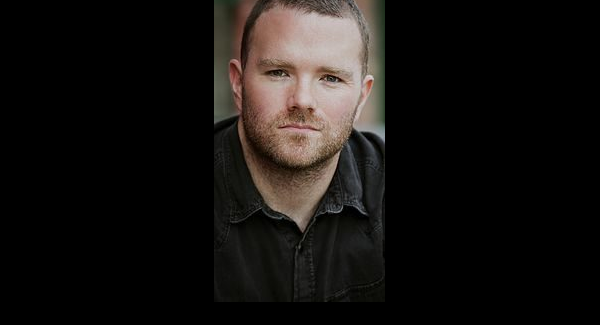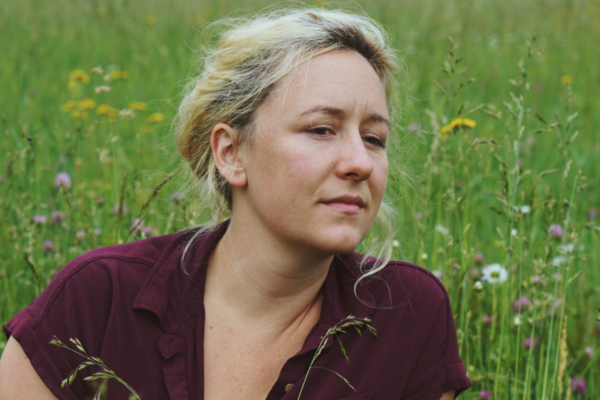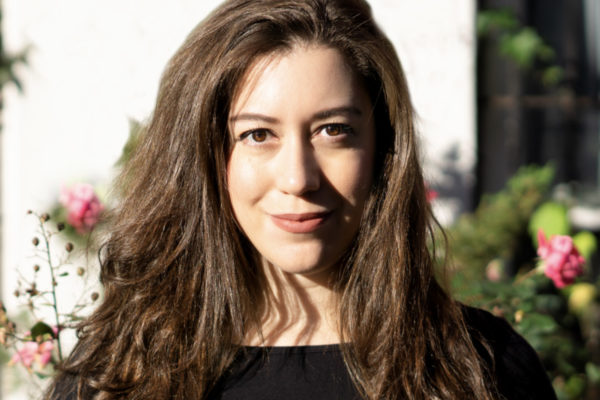Editor’s Note: Below is an interview with Irish novelist Darragh McKeon. In light of the election, we want to reify the power of literature to transform tragedy into art, and the responsibility we all have to create with compassion and social consciousness.
On April 26, 1986, a series of explosions destroyed Reactor 4 at the Chernobyl Nuclear Power Station. The accident is the largest nuclear disaster in human history and prefigured the fall of the Soviet Union. This year marks a solemn anniversary, thirty years since the reactor released two hundred times more radiation than the bombs at Hiroshima and Nagasaki combined. In the novel All That Is Solid Melts Into Air (2014), author Darragh McKeon imagines the unimaginable: the human toll of the Chernobyl tragedy. Through interwoven narratives of characters across the Soviet Union, including a medical doctor, a farmer’s son, a factory worker and a musical prodigy, readers begin to appreciate the tremendous physical, social and environmental effects of the disaster. In this interview conducted in the summer of 2016, McKeon reflects on writing, propaganda, the power of art, and the role of fiction in modern discourse. The interview been edited for clarity and content.
Andrea Caswell: You studied English and sociology at University College Dublin, yet to write this novel, you wanted to understand the science behind the Chernobyl accident, including chemistry and nuclear physics. How did you approach scientific aspects of the research?
Darragh McKeon: For the first year and a half, I spent a lot of time studying nuclear energy and chemical equations—not even learning them, just transcribing them into notebooks. In part, I was trying to justify to myself taking on a nuclear subject, because I felt I needed to understand it fully. After a while I realized that was all background material, and that what mattered most were the stories of people affected by the tragedy.
AC: The way in which you tell those personal stories is beautiful and haunting. A moment that stands out for me is when the doctor, Grigory, is strapped into a helicopter and flown over the burning reactor. You wrote: “Below them, they see the disfigured roof, a gaping mouth, its limits obscured by the fumes it exhales.” It’s a terrifying scene, one in which you decided to anthropomorphize the reactor. Could you talk about the writing of those critical moments?
DK: There were many helicopter flights over Reactor 4 immediately after the accident, and I was especially drawn to the testimony of scientists who saw the burning reactor from above. Some of my work was based on Svetlana Alexievich’s book about Chernobyl – she won the Nobel Prize last year. She interviewed hundreds of survivors, who consistently talked about the sky over the reactor and how beautiful it was. The helicopter pilots had a different perspective. Their lives were at tremendous risk, and many of them actually died. So I was interested in looking at the reactor from a different perspective in order to really see it anew. That moment in the book lent itself to that switching of viewpoint.
AC: As you mentioned, Belarusian journalist and writer Svetlana Alexievich won the Nobel Prize for Literature—the first time in a half-century that the prize has been awarded for nonfiction. She documented personal narratives of survivors in Voices from Chernobyl. How has her work been an inspiration to you?
DK: First of all, there’s the reality that the work carries consequences. Because of the interviews she did, she was forced into exile; it’s only recently that she’s returned to Belarus. She interviewed Chernobyl victims in highly contaminated areas, going into risky situations, which points towards the credibility of her work. I’m reminded of the question of what is our responsibility, as artists, in terms of how we approach what’s happening in the world right now. How do you create something that has integrity, or that’s speaking against the current of mass media? I think Svetlana is someone who’s doing that very effectively as an artist working today.
AC: Did you feel the weight of that responsibility on your shoulders, as a fiction writer portraying an actual event?
DK: Certainly. This was an unprecedented event in human history and I wanted to do it justice, but I also wanted to write a good novel. When you feel a responsibility towards documenting history, that sense of obligation can sometimes stifle your writing. Most accounts of the accident haven’t been widely translated into English, so many people aren’t aware of the personal stories of Chernobyl survivors. I did feel a responsibility to write a book that would give people a conception of what it’s like to live underneath that.
AC: It’s difficult to fathom survival in such a place, one that’s experienced the equivalent of a nuclear war. A poignant moment in the novel is when one of the characters realizes, “Nothing is so unimaginable that it cannot be true.” Part of us wants to reject that—the horror of the unimaginable—yet we’re left with the terrible knowledge that this tragedy did, in fact, happen. Is the novel, whether this one or the novel in general, a way of imagining the unimaginable, perhaps so that we can face it?
DK: That’s something writing can do. I think that art, in all its forms, has the ability to strip away the orthodoxy of rationality, in order to look at the world in a slightly different way. When you go back to movements in history, such as the Renaissance, you see that art often prefigures what happens in terms of history. When we talk about the Zeitgeist, there’s an element we as artists can sometimes tap into before it becomes fully realized, or begins to manifest itself.
AC: Regarding art, Nietzsche wrote that we have art so that we won’t be destroyed by the truth. It’s a beautiful sentiment.
DK: You can look at that in two ways. I’m not convinced that Nietzsche didn’t view art as a distraction as well. I live in New York and go to writers’ parties, and a lot of people are writing TV series. It brings me back to the question, Is that just a way of distracting ourselves from what’s going on? Are we truly engaging with the issues of the day?
AC: As part of that engagement, you travelled to Chernobyl a few years ago. Can you describe the experience of reading from your book in the shadows of Reactor 4?
DK: After I’d written the book, I went and stayed in a hunting lodge in the Exclusion Zone. In the morning I was ready to turn on the tap and brush my teeth, despite my research into radiation exposure. There’s no visceral sign that you’re physically in danger, yet there are great consequences for simple, everyday acts there. It reminded me we’re not sensitized to radiation; we haven’t evolved with it. Some of the shocking stuff in my book, such as firemen arriving at the accident scene in their shirt sleeves, wearing no protective gear—it’s very alarming to read that. But when I was there, I could actually understand it. For them it was just a fire in an industrial facility.
AC: After your visit to the Exclusion Zone, you wrote an essay called “The Empty City” about the abandoned town of Pripyat. You also spent time with families in Belarus; I’m thinking of Vasily and his daughter Sasha, for example. What it was like to meet Chernobyl victims in person, on that soil, after years of studying the disaster?
DK: Naturally it was hard, and I think about them every day. The main thing I’ve taken away from meeting them is that there’s no sense of anger or bitterness. That was very intriguing to me, especially knowing the facts of how the accident occurred. It was due partly to human error, but it was also a result of human apathy. In the Exclusion Zone, you see the tangible consequences of people not taking action and not taking responsibility. Thirty years later, you’re sitting in a room with a child who’s prematurely aging because of decisions made a generation earlier. The reality that each of our actions has consequences came through very strongly. Being around them was inspiring too, especially seeing how they loved and cared for their children. They weren’t looking for reparations; they were just trying to go about their lives.
AC: One of those people was a man named Alexi. Though his father worked on the cleanup after the accident, he told you that he’d uttered the word ‘Chernobyl’ maybe four times in his entire life. Were you surprised by that?
DK: Yeah, I was stunned by Belarus. Belarus never came out of Communism; it’s still a police state. Most people there don’t want to talk about the disaster, and in some ways you can understand that. It’s not like there’s ever going to be a happy ending with Chernobyl. The toxicity from the disaster will be present for tens of thousands of years, so the desire not to live under that shadow makes sense, even though it feels shocking too, that something so enormous can sort of be swept under the rug.
AC: George Orwell wrote, “During times of universal deceit, telling the truth is a revolutionary act.” The physician in your novel takes great personal risks, at one point randomly calling people in the phone book to urge them to evacuate. This conflict between the individual and society seems to be a primary tension in the book, where doing what’s right for society may exact a tremendous personal cost. What were you exploring there?
DK: Some of that came out of the testimony from Soviet scientists. When Soviet nuclear scientists talk about the explosion, a tremendous sense of guilt comes through. These people were on the same plane as cosmonauts, at the pinnacle of Soviet society. Nuclear power was a brand new world that showed Soviet engineering in its greatest light. At the same time, they weren’t rigorous in their work and they knew it. I based some of that conflict on a scientist named Valery Legasov, who ended up taking his own life on the second anniversary of the disaster. He was aware of the risks being taken in the Soviet nuclear program, and in retrospect, perhaps he felt he didn’t speak up forcibly enough. But at the same time, he was living in a very oppressive regime in which that wouldn’t have been possible. It’s a very difficult burden for those scientists to bear.
AC: This year marks the 30th anniversary of the disaster. Adi Roche, who founded Chernobyl Children International and whom you’ve worked with, urges us to show compassion, for this new generation of Chernobyl victims and for ourselves, in every way we can. She writes on her website, “It is our responsibility to speak out, to tell the truth…” Is the purpose of fiction to tell the truth?
DK: I’d phrase it slightly differently. Fiction is a way to gain understanding that may be contrary to the type of discourse we’d normally undertake. It goes back to the rationality point I was making earlier. There’s a Spinoza line that I sometimes think of—Spinoza is the Dutch philosopher—and he says that surely human affairs would be happier if the power in man to be silent were the same as that to speak. We’re at a time where we think debating is a way to form understanding and knowledge, but we end up just slinging words at each other. I think something important about fiction is that it’s not a debate, or a forum for rattling off statistics. Fiction can offer a different means of understanding.
AC: You have an extensive background in theater. Would you say the same of theater, or art in general, that its purpose is to help us understand something we might not otherwise engage with?
DK: Sure, it goes back to that. How do you gain an understanding of somebody else’s life? We talk a lot about empathy in fiction, but I think that because fiction and art inhabit an imaginative space, they don’t become part of a discourse. They don’t become weapons, essentially. About ten years ago I worked with a Swedish theater director named Susana Osten, who did a project with child soldiers in Liberia. The kids were somewhere between 8 and 12 years old, and they’d be given Kalashnikovs and became guerilla fighters in the Liberian war. When she first started, she found them incredibly enclosed and almost feral, in terms of the adult aggression they’d taken on. In the project she began to play them music, and when they heard music they literally became children again. They dropped their guns and were attracted to whatever musical instruments were playing. The idea that art can circumvent that kind of violent conflict is very powerful.
AC: As you were working on All That Is Solid Melts Into Air, a large-scale nuclear disaster occurred at the Fukushima Daiichi plant in Japan. Did that event affect your thinking or sense of urgency in bringing human faces and stories to this type of accident?
DK: It did underline the importance of the topic. Something I found interesting was that the rhetoric coming out of that accident, in terms of safety protocols and statements from the managers of the clean-up, was similar to the rhetoric used by Soviet authorities in 1986. One of the more shocking aspects of Dr. Yuri Bandazhevsky’s work, specifically his long-term studies of children in the most contaminated areas of Belarus, is that very little of this type of research has ever been done. To me that’s a sin of omission. If we’re not really taking the time to conduct long-term studies of the effects of radiation on the human body, it points towards an avoidance. Dr. Bandazhevsky is one of the few people in the world doing that, and his conclusions are very concrete: there’s no such thing as an acceptable dosage of radiation, since it affects every person differently. Someone can receive a tiny amount of radiation and it can have massive effects. Watching the news footage of Fukushima brought home the fact that institutions will always protect their interests. The idea that there are acceptable dosages of industrial radiation is simply not true.
AC: We see the continuing effects of that exposure in the people still living near the plant today. Could you talk a bit more about the work of Adi Roche and her charity for the victims of Chernobyl?
DK: I don’t see anyone dismantling the nuclear industry anytime soon; I’m not sure that’s possible. Something I love about Adi is she does her work completely selflessly. She doesn’t draw a salary from her charity or do it to gain recognition. She does it because she has a real love for these people. We often despair that individuals can no longer make a difference in this world. She’s an antidote to that idea.
From Ireland, Darragh McKeon has worked as a theatre director throughout Europe and the USA. He lives in New York. All That is Solid Melts Into Air is his debut novel.
Andrea Caswell grew up in Los Angeles, and later earned degrees from Tufts and Harvard. She’s a candidate for an MFA in Writing and Literature in the Bennington Writing Seminars. Her work has been published by River Teeth, The Normal School Online, The Stonecoast Review, and others. She lives with her husband in Newburyport, Massachusetts.




